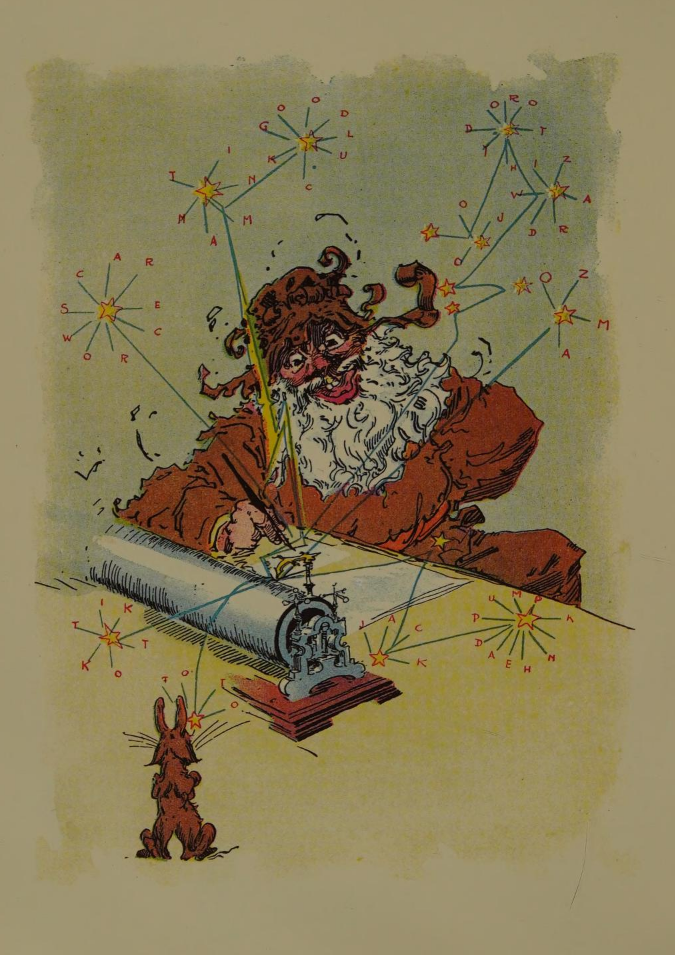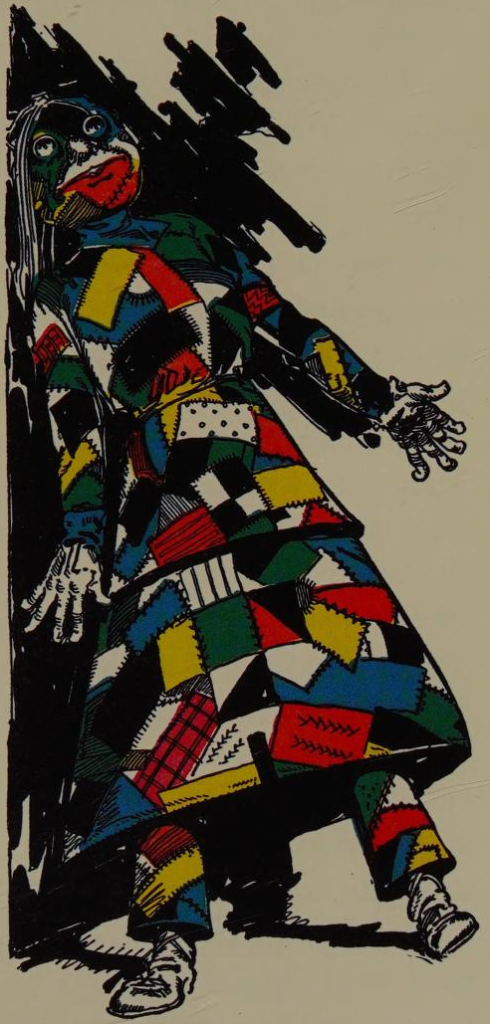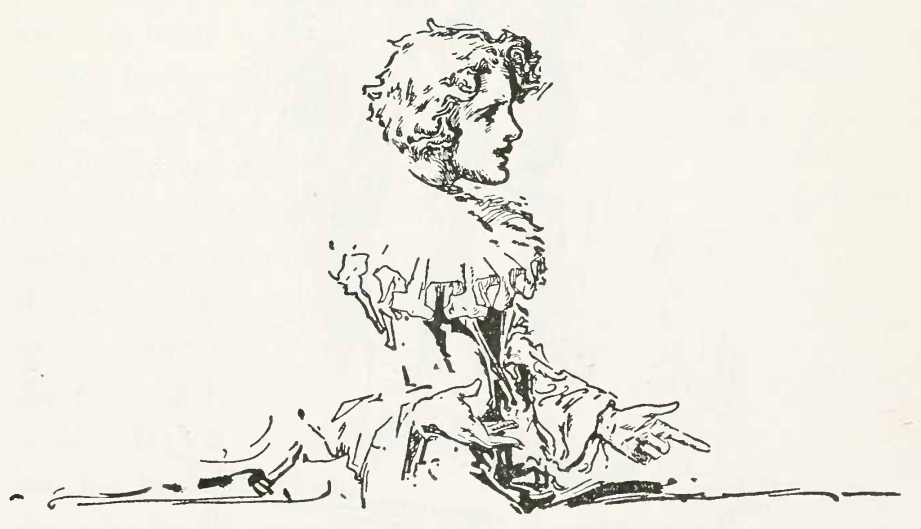Published 15 March 2023
(Continued from my previous post in this series, and each of the ones before that.)

In The Emerald City of Oz, Oz was hermetically sealed. However, L. Frank Baum, continuing to be a character in the fiction, is able to continue his role as Royal Historian by corresponding with the Shaggy Man via wireless telegraph. From Ozma of Oz onward, Baum depicts Oz as a utopia, not a land for perilous adventures but where the adventures end. However, the action can no longer leave the bounds of Oz. Continuing the series meant finding more peril and conflict in Oz itself. So, in 1913, the fan-favorite The Patchwork Girl of Oz began a new phase of the series in which Baum reveals that huge swaths of Oz consist of wilderness and areas beyond Emerald City control, still with beasts, individuals, and whole nations (e.g. the Hammer-Heads, the Utensians, and Jinxland) that do not know about or refuse to acknowledge Ozma’s rule. Even the Kalidahs, which Baum insisted had been tamed in The Emerald City, are apparently still wild. (“Hammerhead” is now spelled without a hyphen, one of Baum’s favorite types of inconsistencies.)

As the title The Patchwork Girl of Oz implies, a new character, Scraps, a living girl stuffed with cotton and sewn with a patchwork quilt, takes a leading role. One of the most popular Oz characters, the 1913 Patchwork Girl might be an inspiration for Raggedy Ann, who first appeared in 1915. The novel has two distinct halves. The first half features Ojo, Scraps, and the Glass Cat in search of a checklist of ingredients for a magic potion. They follow the Yellow Brick Road to the Emerald City on the advice of the Wise Donkey, a character from Baum’s novel The Magical Monarch of Mo. Along the way, they meet two additional companions, the Woozy and the familiar Shaggy Man. Acting as the new characters’ first link to the core Oz cast, the Shaggy Man ushers them into the more respectable, boring side of Oz.
This resembles Dorothy’s journey in The Wonderful Wizard of Oz. The Emerald City greets her merrily, but the repeated warnings that Ojo will be arrested in the Emerald City prove true: he and his friends are engaged in illegal activities. During a series of chapters showing the Ozite penal system (prisoners are marched through the streets under sheets to hide their shame), Ozma seems to be the villain, or at least something less than universally good. Then Ojo realizes Ozma is kind and loving after all, phew. After Ozma releases Ojo, her one and only prisoner, from jail, she allows him, Scraps, Dorothy, and the Scarecrow to journey into the “wild country” of the Quadlings to seek out the remaining potion ingredients.
The story is to some extent a parody of the original novel: misfit friends follow the Yellow Brick Road from Munchkin Country to the Emerald City and from there travel south to Quadling Country. However, instead of grand, world-changing adventures and emotional bonding, this time the characters are often nasty to each other and to the people they meet. They learn nothing while doing nothing that affects anything. The Hopper and the Horner war episode is silly comedy, more like make-believe than war, with none of the weighty dread or substantial changes that result from the Wicked Witch of the West and the Wizard plots. Finally, the characters completely fail to achieve their goals. Then, instead of, as in the original novel, the Wizard using fake magic to pretend to resolve the issues the misfits already internally resolved, the Wizard uses real magic to resolve their real problems in an abrupt deus ex machina.
Baum was also involved in creating the 1914 movie adaptation of The Patchwork Girl of Oz (which takes out none of the racism), but I leave it to someone else to describe that financial failure. I just want to clarify that it exists and does not quite follow the plot of the novel. With that acknowledged…
Ojo Begins

In addition to Oz now having imperfections, there is another break in the series pattern. Instead of Dorothy Gale, the main character is—not the Patchwork Girl but rather Ojo the Unlucky, a Munchkin boy with a huge ruffled collar. He lives in an isolated house in the wilderness of Munchkin Country with his white-bearded uncle Nunkie, apparently just north of the mountain of the Hammerheads in Quadling Country. Unc Nunkie is a taciturn man, usually responding to any subject with a one-word answer if he must speak, for which reason he is known as the Silent One.
In The Road to Oz and The Emerald City of Oz, Baum claims there are no poor people in his fairy land utopia. This time around, though, the novel opens with Ojo and Unc Nunkie out of food and wondering why they are so poor. The answer preserves Ozma’s benevolence: their extreme isolation. “There is plenty for everyone, you know; only if it isn’t just where you happen to be, you must go where it is” (20). Poor people as protagonists? Yes, but never fear, Baum has not lost his fixation on bloodlines. Before his self-imposed exile, Unc Nunkie “might have been King of the Munchkins, had not his people united with all the other countries of Oz in acknowledging Ozma as their sole ruler” (50).